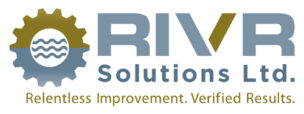I have experienced too many times organizations who have set up their production lines with end-to-end flow, visual controls, standardized production, other Lean manufacturing concepts and throw out Lean principles when a crisis is presented to them. Single piece flow becomes a memory when production has to be done, and done quick. Alternatively demand drops out the bottom and the production line becomes a job shop with one person manning the work station. In a crisis our instinct is to go back to what we know, which is typically batch processing, putting the tools back into the toolbox and giving one person one work order.
As much as flow production thrives on steady state, it also lends itself to scalability. The key is not to react in a knee-jerk fashion when faced with a major change. Instead:
- Utilize the Lean tools that you have already developed.
- Determine your new required takt time.
- Take a look at your visual controls, and adjust them accordingly.
- For a temporary downturn, put tape over visual control locations to match the required takt time vs the cycle time for the work station.
- Adjust the number of employees on the line and potentially make adjustments on the assembly tasks, performed at each station, to better match labour to the new takt time.
- Adjust your kanban cards and min/max levels to satisfy your production and supply requirements.
The key task is to make adjustments on your Lean manufacturing line in order to react to the fluctuating demand created by this pandemic. Depending on your industry, production either increased dramatically or it decreased quickly and demand will likely change again when the pandemic is over. You have obviously reacted quickly to make the necessary adjustments. However, before reacting again, take a moment to assess the situation, use your Lean tools to help you become more flexible and responsive to the changing demand. In the end, you will be able to manage change with nimble accuracy and bring improved flexibility to your organization.
I have read articles and attended a few webinars on how companies are responding to social distancing and operating during this pandemic. One of the key pieces of advice is to first standardize your social distancing policy. Set new expectations on how people interact and utilize production and break room space while social distancing. The next step is to use visual cues to guide employees of where to go, confirm which workspaces can be used and maintain distance so direct hand-offs are avoided. If your employees are accustomed to a visual factory, they are already tuned into paying attention to visual cues. The use of tape on the floor will stop people from going into certain areas, direct traffic, or prohibit space where you would normally have two people standing next to each other. These visual cues are important ways to train employees to do work differently without having to constantly manage where people go, and where they can be and not be at any one point in time.
Every organization has been forced to make adjustments due to our new reality, but use this as a reminder to leverage your Lean tools to help communicate your new normal and take steps to become more nimble in this fluctuating environment.
Keep it flowing,
Greg Hastings

